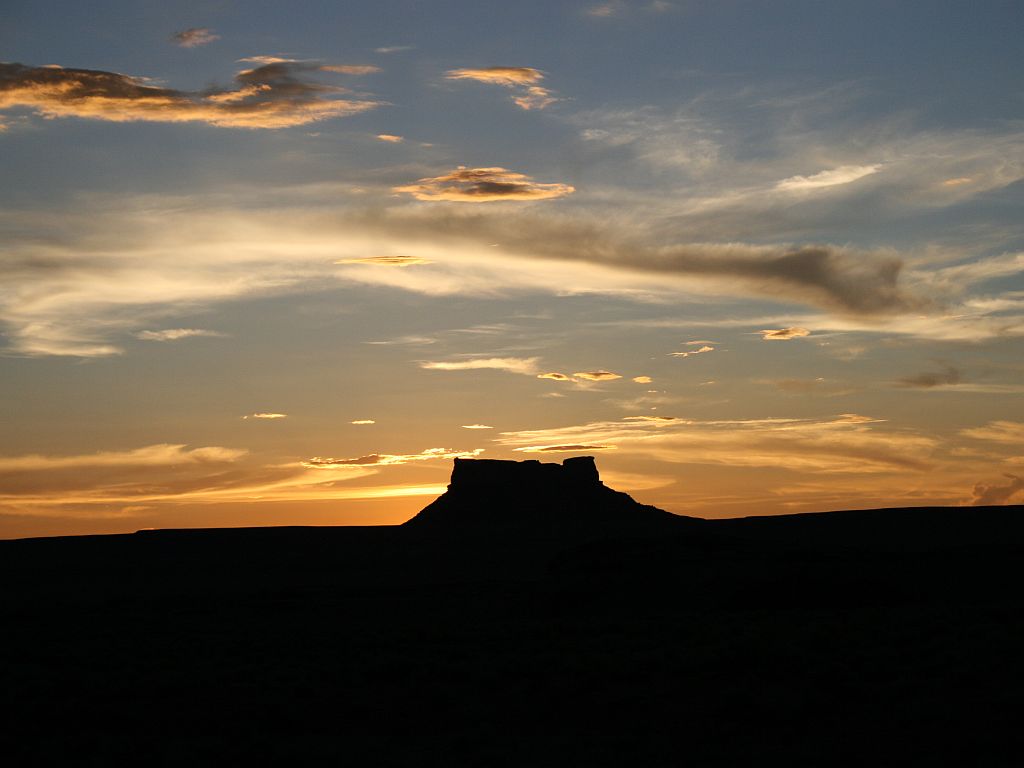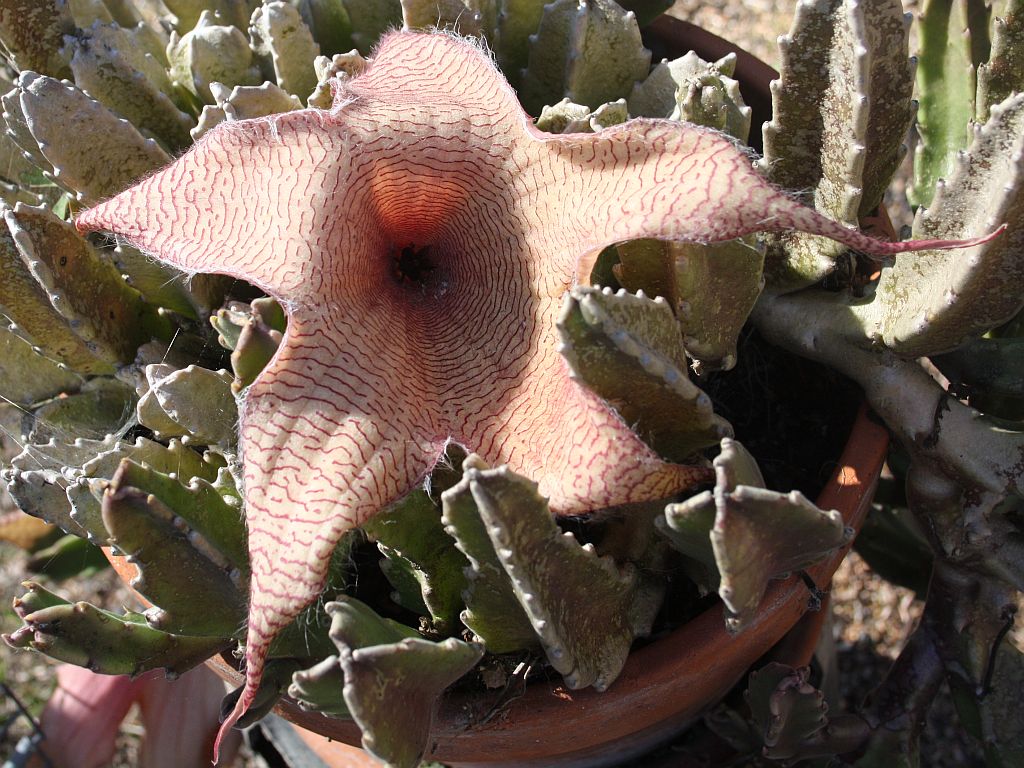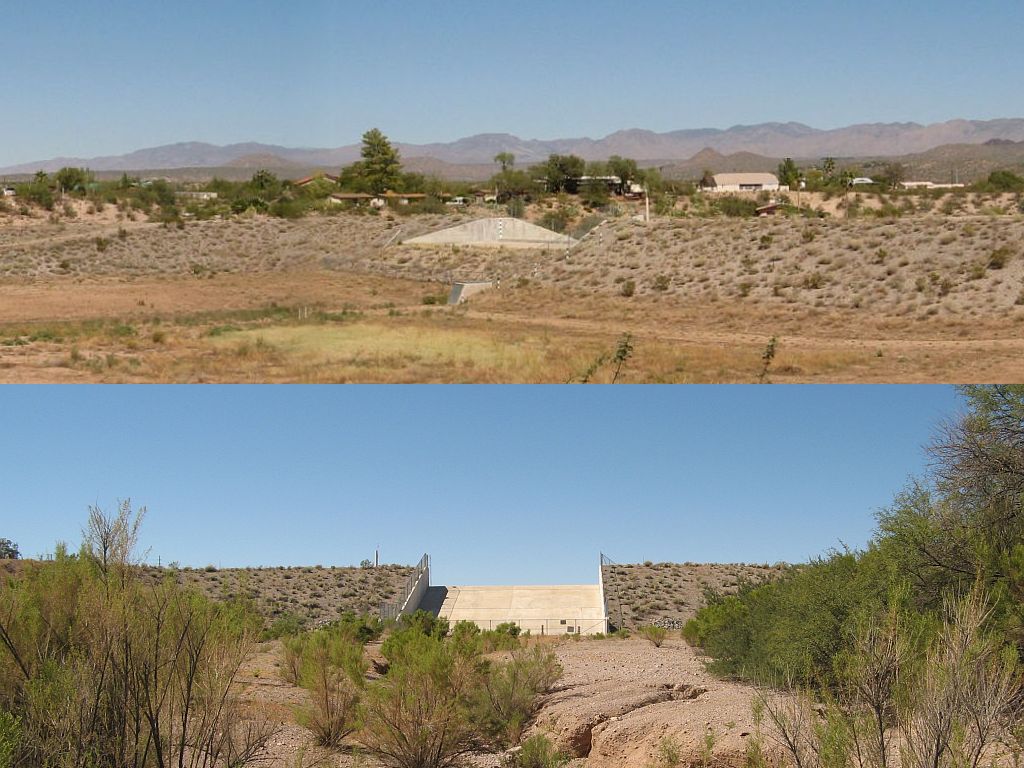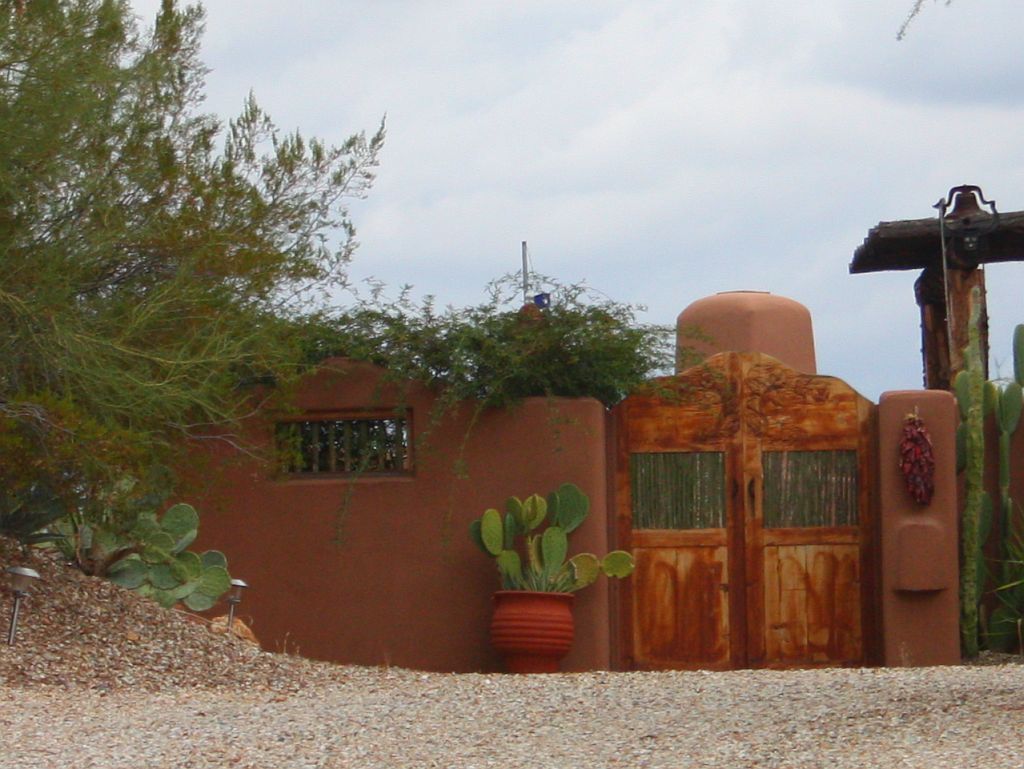October 2010
Carrion Plant
For the last couple of years, I have posted pictures of the Carrion Plant (Stapelia Gigantea) in September, the normal time for them to bloom. For whatever reason, this year they were about a month late. This is one of the last flowers to open in late October. Click on the image to enlarge.
From Plant of the Week:
Stapelia gigantea is an interesting plant that resembles cactus, with clumps of 4-sided spineless stems. Carrion flowers are native to S. Africa.
Blooming Time: September. Flowers are large, fleshy, shaped as 5-pointed stars; they have an elaborate circular fleshy disk in the center. The flowers smell like carrion and are not offensive if blooming outside. Flowers are 10-16 inches across.
Culture: Stapelia gigantea need full sun and moderate water in the growing season. They need a well-drained soil (2 parts loam to 1 part sharp sand) with small pebbles mixed in for drainage. They need a cool, dry rest period in winter. Fertilize once during the growing season with a balanced fertilizer diluted to ½ the strength recommended on the label. They are best managed in pots and can withstand extreme heat.
Propagation: Stapelia gigantea are propagated by stem cuttings. Take cutting in spring when new growth begins. Let cuttings callus up for 2-3 weeks before planting.
Casandro Wash Dam
Image: (top) west side of the dam and basin (seen from US 60) – (bottom) east side showing spillway and lower wash. Click on the image to enlarge.
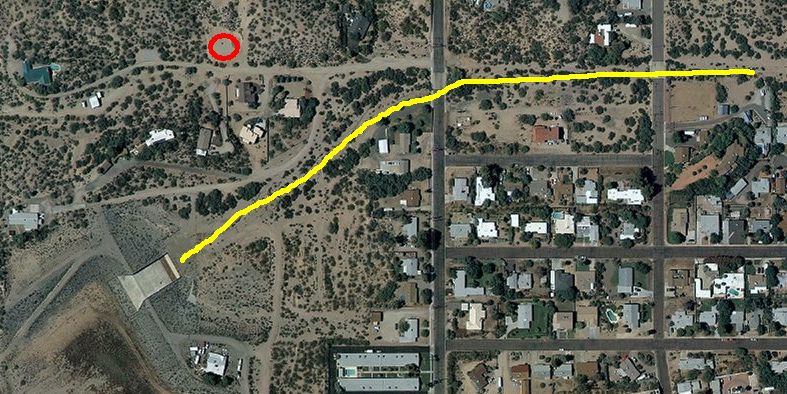 One of the things you have to consider when buying property is the potential for damage from fire and flooding. I was very interested in the proximity of the Casandro Wash Dam and how the floodplain might affect our property.
One of the things you have to consider when buying property is the potential for damage from fire and flooding. I was very interested in the proximity of the Casandro Wash Dam and how the floodplain might affect our property.
The diagram at the right shows an aerial view of the dam and spillway, the lower wash (yellow line) and the location of the new house (red circle). Click the thumbnail to enlarge.
According to the Flood Control District of Maricopa county:
Casandro Wash Dam was constructed to collect and store water from the Casandro Wash, removing a significant number of residential structures from the 100-year floodplain in a three-square-mile area east of the structure. The dam is 350 feet in length and the emergency spillway is an 80-foot-wide concrete weir through the embankment near the center of the dam. Casandro Wash Dam was constructed by the District which is also responsible for the operation and maintenance of the structure excluding the outfall system, which is maintained by the Town of Wickenburg.
From all the information we have gathered and the details in the escrow papers, we, and the other property owners near Casandro Wash are in pretty good shape when it comes to flood potential thanks to the dam and spillway.



